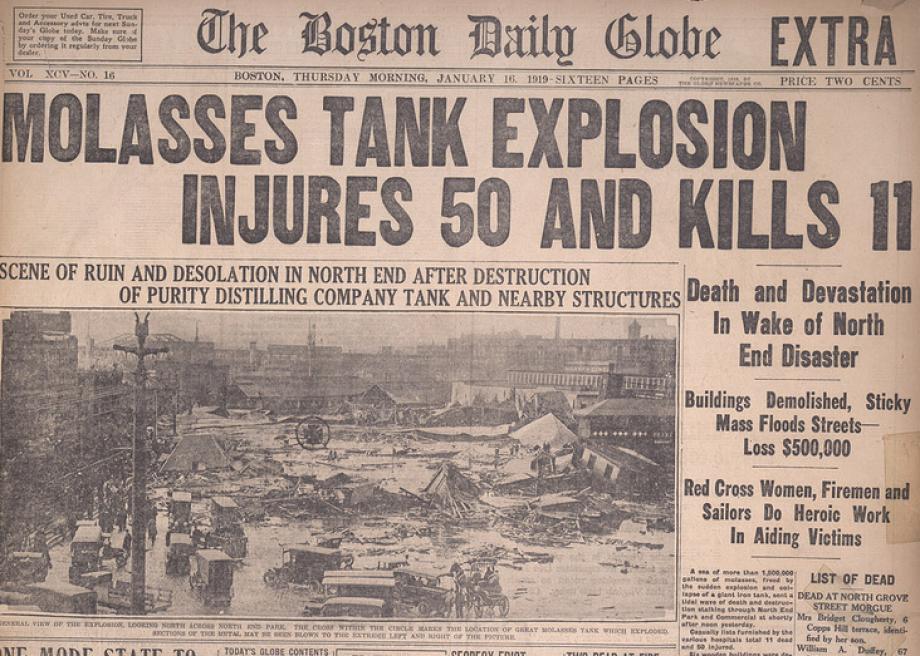Sweet, Sweet Death: Boston's Fatal Molasses Flood of 1919
Atlas Obscura on Slate is a blog about the world's hidden wonders. Like us on Facebook, Tumblr, or follow us on Twitter @atlasobscura.
On a stone wall at the entrance to Puopolo Park in Boston's North End there's a monument to murderous molasses.
Just after noon on January 15, 1919, a hail of gunshots rang out in the North End. The thunderous cascade of collapsing metal caused the ground to rumble and shake. Residents barely had time to register the sounds before an astonishing sight greeted them: a two-story wave of molasses barreling down the streets at 35 miles an hour.
Those sounds they had heard weren't gunshots. They were rivets pinging from the 50-foot-tall, 90-foot-wide Purity Distilling Company molasses tank that had just collapsed onto Commercial Street.
The torrent of sticky brown goo bore such force, and carried so much debris, that it buckled pillars of Boston's elevated railway. Cars were crushed, horses perished in the sickly-sweet tide, and buildings broke apart.
Then there was the human toll. Twenty-one people perished in the great molasses flood. The high viscosity of the syrup hampered rescue operations—rescue workers spent four days searching for people in its murky, gummy depths.
The disaster was the result of poor tank construction and lax maintenance. An unusual increase in temperature on the day before the disaster—from 2 to 41 degrees Fahrenheit—increased the pressure in the tank, which was already high due to molasses fermentation. When the walls could no longer handle the strain, the rivets popped and the tank collapsed.
If you visit the old site of the Purity Distilling Company—now Puopolo Park—you'll see a sign commemorating the flood. Close your eyes and use your imagination and you may smell sweetness on the wind.
When food bites back:
View Site of the Molasses Flood in a larger map



